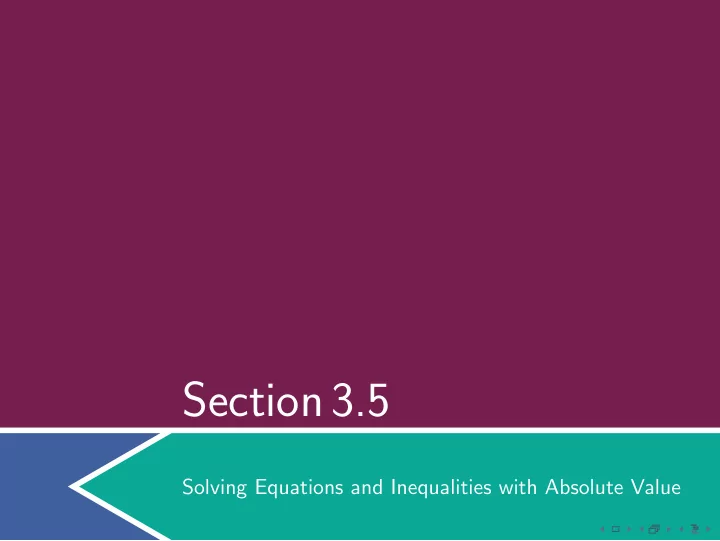

Section3.5 Solving Equations and Inequalities with Absolute Value
AbsoluteValueEquations
Method To solve, put the equation into the standard form by isolating the absolute value on one side of the equation. It should look like | X | = c If c < 0, there are no solutions. If c ≥ 0, solve the equations by setting X = c and X = − c .
Examples Solve the equations: 1. | 2 x − 1 | − 5 = − 3 x = 3 2 or x = − 1 2 2. 9 − | x − 2 | = 11 No solution.
AbsoluteValueInequalities
Method To solve, put the inequality into the standard form by isolating the absolute value on one side of the inequality. Standard Form c > 0 c < 0 c = 0 (normal case) | X | < c − c < X < c no no solution solution | X | ≤ c − c ≤ X ≤ c no X = 0 solution | X | > c X < − c all real all real numbers or X > c numbers except X = 0 | X | ≥ c X ≤ − c all real all real or X ≥ c numbers numbers
Examples Solve the inequalities and write the answers in interval notation: 1. 4 − | 2 x + 3 | ≤ 3 ( −∞ , − 2] ∪ [ − 1 , ∞ ) 2. 1 − | 3 x + 4 | > 9 No solution. 3. | 6 − 4 x | ≤ 8 − 1 2 , 7 � � 2 4. 3 | x + 4 | + 2 > 1 ( −∞ , ∞ )
Recommend
More recommend